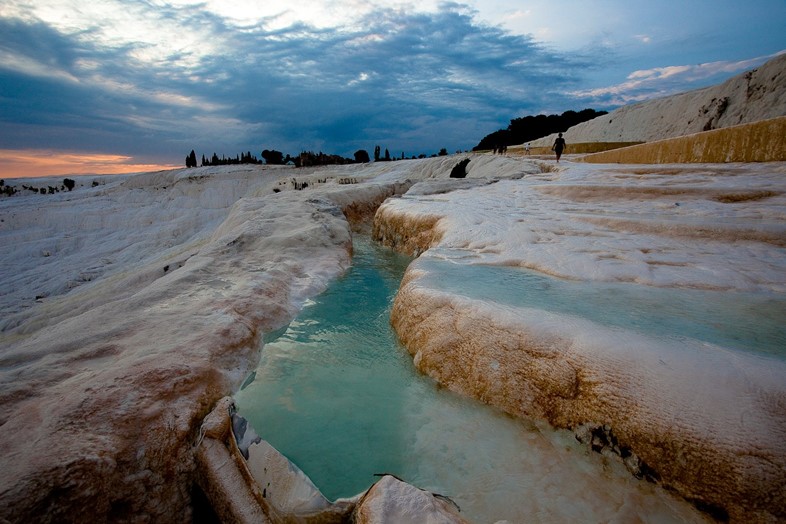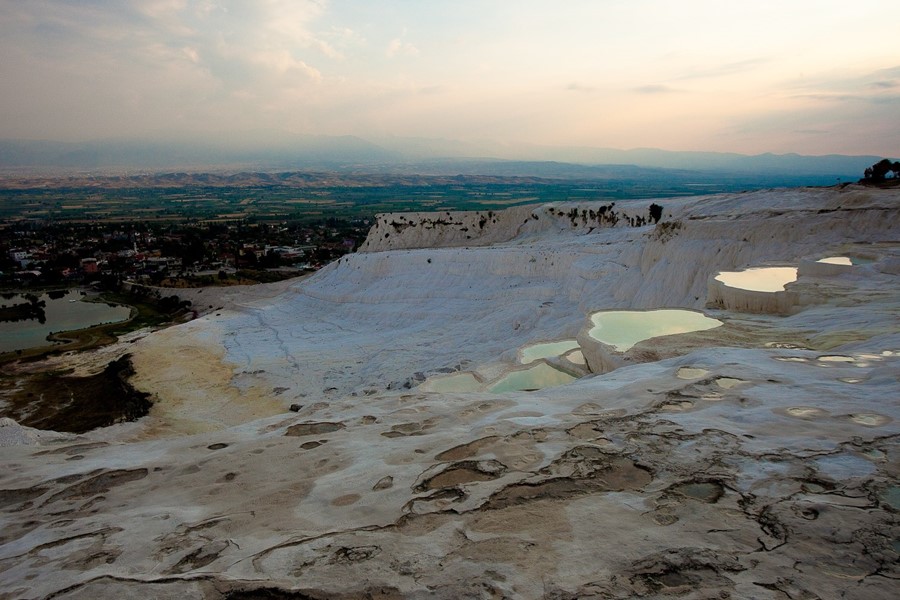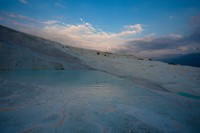We teeter along the edges of an extraordinary Turkish "glacier" forged by minerals and hot springs
Where on Earth?
Denizli Province, Turkey
GPS Coordinates: 37°54′N 29°7′E
An otherworldly white landscape rising from the hills, the glittering terraces of Pamukkale have been drawing visitors for over two millennia. The calcium-rich waters that created this natural wonder still flow from the slopes overlooking the Curuksu Valley, creating a surreal, glimmering wonderland above the plains. Gleaming minerals trickling downhill over the eons etched the land long ago, forming a series of cascading pools which brim with clear, blue water reflecting the sky. Like an icy river forever frozen under the scorching Aegean sun, it’s a strange sight.
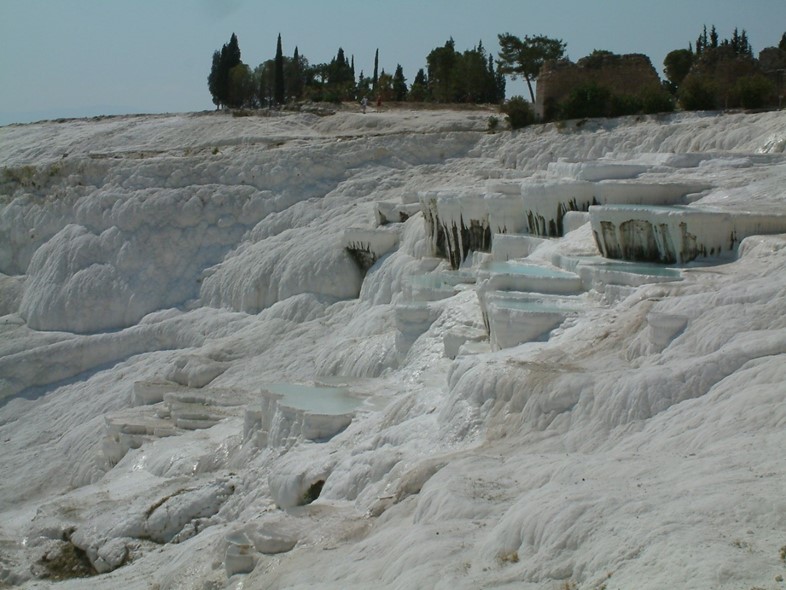
Located in Turkey’s Denizli Province, Pamukkale (Turkish for ‘cotton castle’) has long been at the crossroads of cultures: Phrygian and Greek, Roman and Byzantine, Anatolian and Macedonian. In ancient times, the cascading waters and nearby springs formed the basis of a cult of worship and healing. The adjacent city of Hierapolis was founded in the late second century BC by the Attalid dynasty, and became an important thermal spa and treatment centre. Later Roman and Christian-era were built upon this, combining to create an architectural treasure to rival the natural one nearby. In 1988, Hierapolis-Pamukkale was awarded UNESCO World Heritage Site status in recognition of its incredible archeological and natural treasures.

What on Earth?
Like similar sites in America, Guatemala, China, Iran and Italy, the overlapping terraces and pools are formed from a specific type of limestone called travertine. At Pamukkale, geothermal water rich in calcium carbonate rises to the surface, seeping from 17 separate hot springs at a rate of over 400 litres a second. As the water flows downhill and cools, it releases CO2 and becomes less acidic, leaving gleaming white calcium carbonate behind. The chemical equation to describe this reaction is
Ca(HCO3)2 = CaCO3 + CO2 + H2O
but in short it means the water is constantly releasing new calcium carbonate. This covers the existing surface to keep it gleaming and, over time, generates the spectacularly coated cliffs, bulges and pools that define this alien landscape. To add to the surreality, stones and branches submerged in the water soon grow a white coating, trees and shrubs sprout where they can and an entire ancient mausoleum is slowly being surrounded and consumed. Like some slow motion glacier, the trickling minerals continue to move inexorably over the landscape.
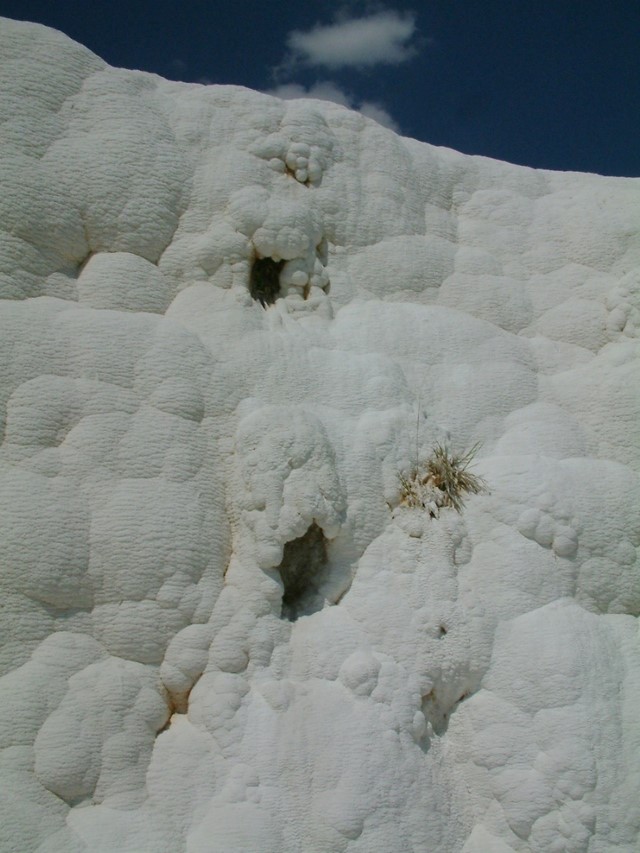
How on Earth?
Despite some of the surreal, empty and otherworldly photos that make it seem untouched, Pamukkale is actually one of Turkey’s more popular attractions. Access to the more delicate pools is now (thankfully) restricted to preserve them but you can still go barefoot to explore large parts of the formation. Arrive in the morning, evening or winter to avoid the crowds. The nearest large town, Denizli, is about three hours from Bodrum and plenty of tours visit the area.
